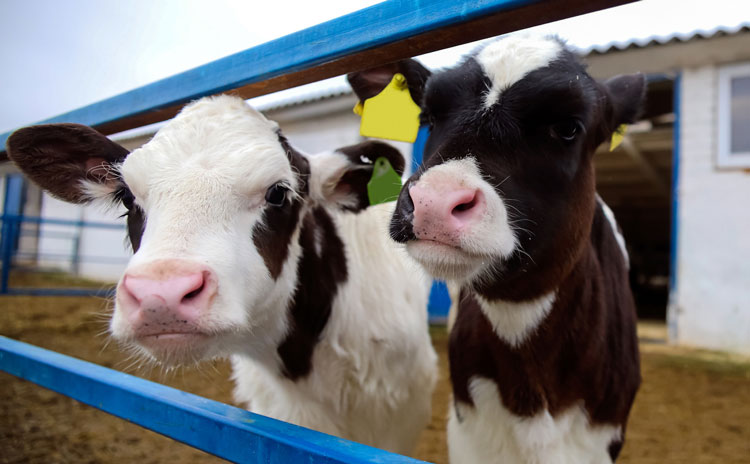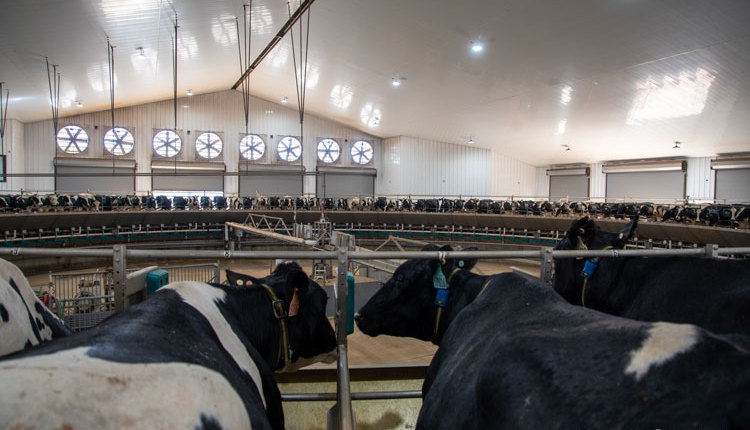The author is a vet who runs UdderWise-Global Mastitis Solutions, United Kingdom. To learn more about the author, visit his website at www.udderwise.co.uk.

Russ was so excited to tell me about his new plans for calf rearing, even though some of those plans had been forced upon him. For the last 10 years, calves were reared in double hutches on a long concrete slab close to the milking parlor. They had 40 hutches for the 300-cow herd, which calved all year round.
Russ is 40 years old and took over running the farm from his dad 10 years ago. A decision was made to build a new green field site dairy facility with a parlor and freestall barn. They put so much time into planning this new farm site to get as much right about its design and construction as possible.
The planning paid off
There is excellent cow flow, wide passageways, excellent handling facilities, a modern parlor with a wide pit that makes milking really pleasurable, lots of rubber matting for cows to walk on, and comfortable freestalls for the cows. It is one of the best green field dairy facilities I have seen.
However, there are strict environmental controls for agriculture in the United Kingdom with new rules being introduced all the time. Russ was told that he could no longer keep calves in hutches on the concrete slab as there was a risk that any runoff water could contaminate the local river. The options were to put down a new concrete slab and move the hutches or build a new calf shed and change their calf-rearing system.
Russ’s dad, James, is 66 years old. He has been in charge of calf rearing since he handed the farm management over to Russ. He is aware that he is getting older, his health is not 100%, and he gets more tired. Over time, this will get worse, and Russ knew that his dad needed to gently step back and have an easier life.
They discussed options for calf rearing and decided that they would move away from mixing milk powder and feeding calves in buckets in the hutches. This had been highly successful, and there were no problems with scour or pneumonia, but it was labor intensive and changes to regulations were forcing a shift.
Incorporating automation
Russ and his dad started planning for a new calf barn with automatic feeders. They were very excited about this project. James realized that he could carry on being responsible for the calves, as this would require far less work.
They identified a site for the new calf barn away from the dairy so there would be no risk of any shared air from the cows carrying respiratory viruses to the calves. They charted out a plan based on how many calves they were likely to have in the shed at any one time. This would require eight calf pens holding 15 calves each.
Russ and James also decided that they wanted to add in two extra pens just in case they were ever needed and to have plenty of space to manage any sick calves separately from healthy calves. They also decided that instead of having 15 calves in each pen, they would reduce this to 12 calves. That even number would allow calves to pair up socially.
They consulted a ventilation expert to advise them on the best barn design to get good air movement, minimize pneumonia, and keep the shed as dry as possible. The expert came up with many practical ideas that they would never have considered. They decided to widen the pens so that they could run a tractor up through the barn and clean out the pens quickly. This also gave more space per calf in each pen.
Their plan is to take calf rearing to the next level. Russ was so excited when he was describing the project to me. Calves will be fed on automatic feeders and can have milk whenever they want, just like they would do if they were staying with their dam. This will minimize the risk of calf scours, reduce stress, and improve growth rates while making calves healthier. The button ear tag on each calf will monitor milk intake and speed of drinking.
There will be an app on Russ and James’ phones that will alert them to calves that are not drinking what is expected, if their drinking rates are slow, or if they are not visiting the feeders at the expected intervals. All of these factors would be an early warning indicator that something might be wrong with a calf.
They wanted to ensure that the calves would be healthy and grow well. Their planning for the calf shed followed the same approach they took with the new dairy — minimize disease, reduce labor input, make it future-proof, and keep it as easy to manage as possible.
Despite being in his 60s, James has embraced modern technology and he can see the benefits that this new form of automated calf rearing can bring. This will help transform their dairy, resulting in healthier calves.
The new calf facility has proven to be a real success, and the only comment was that they should have done this a few years earlier; but as James pointed out, the technology then might not have been as good as it is now!





